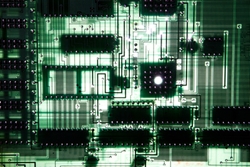Does Your Operating System Manage Itself?
 People can harbor some unfortunate misconceptions when it comes to operating systems. The name itself, with its action verb ‘operating,’ seems to indicate a self-policing, constantly working schema that can run independently of user attentiveness. The short answer is that the operating system is able to do a lot of things on its own, but there are some areas where its functionality can be compromised. It’s up to the user to be able to identify areas in which the operating system can right itself and instances in which it might need a little help.
People can harbor some unfortunate misconceptions when it comes to operating systems. The name itself, with its action verb ‘operating,’ seems to indicate a self-policing, constantly working schema that can run independently of user attentiveness. The short answer is that the operating system is able to do a lot of things on its own, but there are some areas where its functionality can be compromised. It’s up to the user to be able to identify areas in which the operating system can right itself and instances in which it might need a little help.
What an Operating System Can Do
The first step to knowing how the operating system can break down is to understand how it functions. Users are accustomed to being able to do multiple things on their computers at once, such as edit a photo, download a file and listen to music, for example. They can do this because of the operating system. The earliest computers lacked an operating system, and so users could only work with one file or program at once.
Today’s operating systems are fast — so fast that it appears that the user is running all of their programs simultaneously. In reality, the operating system is rapidly oscillating between programs, so that the user can’t tell the difference. This is made possible by the processor, which runs at lightning speeds. The operating system effectively directs processor speed to each ‘open’ program as it toggles between them. In this way, it’s like the general of the PC, deploying resources in order to retain a consistent march of computer activity and prevent slow computers and disk crashes.
What an Operating System Can’t Do
Although the operating system can usually marshal processor speeds to the different programs that require it, too many applications making a litany of requests can create bottlenecks to the system and slow down the computer. There are a couple of actions that aren’t under the operating system’s full control. One is latency, which marks the delay between a CPU’s information request and when that information is actually made available, like the time between opening an application and when it is actually available for the user to start working with. Since the operating system will try to drive processing speed up to the amount needed to start a program, several large requests processed at once can jam up the system and create serious latency.
Another task the operating system has trouble with is disk fragmentation. In order to optimize storage, it fragments files across the hard disk and then scours the disk for them as needed. As files continue to mount, the operating system will continue to fragment them with the same abandon it had at first — it isn’t smart enough to change up its strategy. The user needs to utilize a disk defragmenter to reformat the hard drive and reduce the operating system’s file-finding efforts.
The operating system also doesn’t pick up on duplicate files. File redundancy can slow computers down, and file overloads could become even more of a problem in the big data era, according to ThomasNet. Unless the hard drive is regularly identified and removed with a registry cleaner, it can become crowded with duplicate and unnecessary data and files.
Choosing an operating system that’s right for your business or consumer needs is a critical decision, and according to TechHive, future computing platforms will be able to run different operating systems as easily as one can utilize different web browsers today. While having more operating systems can offer benefits for users, many of the same issues will still apply. Utilizing a comprehensive and automatic PC optimization solution such as iolo technologies’ System Mechanic can help users manage the parts of the operating system that it can’t fix by itself.
System Mechanic has proprietary technology relying on over 16 years of in-house engineering research developed to boost speed, eliminate crashes, and prevent errors and problems from recurring. One-click power tools intelligently diagnose and resolve errors built into the Windows OS that otherwise get worse over time. Meanwhile, System Mechanic’s patented ActiveCare® technology automatically keeps your PC healthy by performing a series of maintenance actions while the PC is idle.








